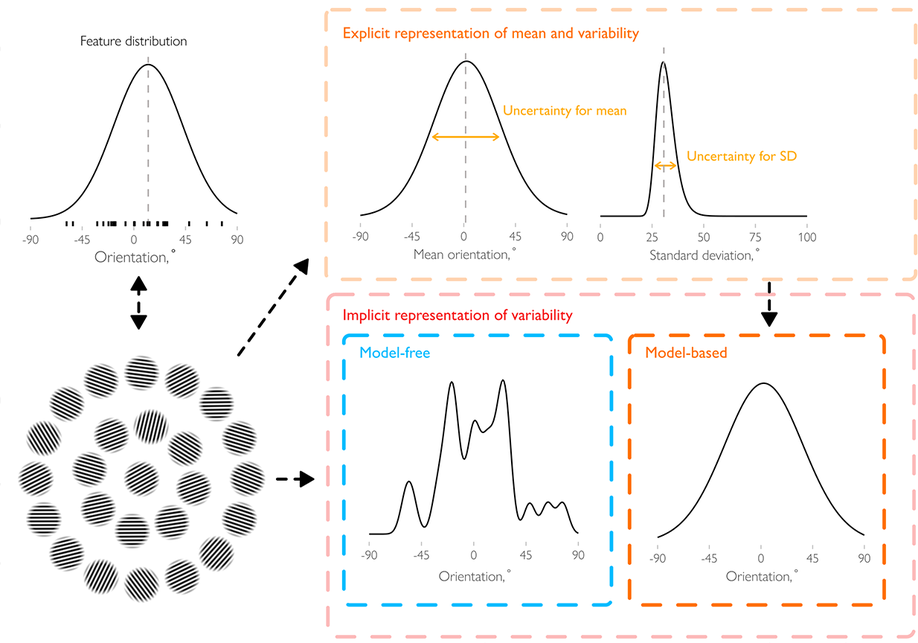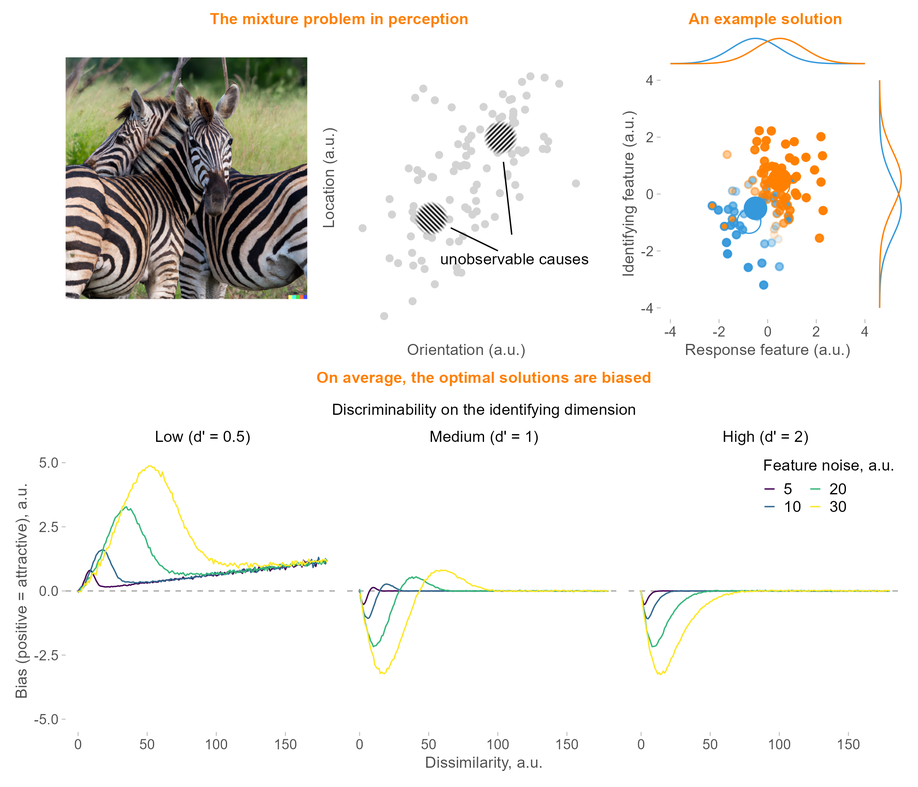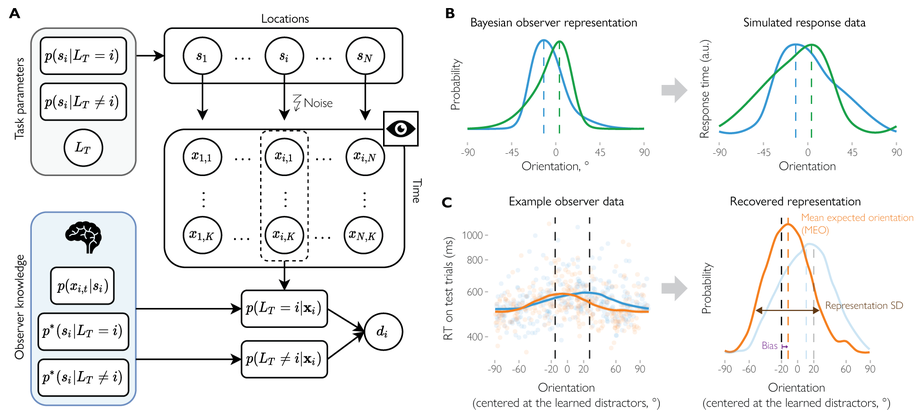Kristjánsson, Á., & Chetverikov, A. (2025). Attention is doing just fine! Just don’t take it too seriously.
Behavioral and Brain Sciences, 48, e147.
10.1017/S0140525X25000159 PDFFarboud, S., Kop, B. R., Koolschijn, R. S., Walstra, S. L. Y., Marques, J. P., Chetverikov, A., Medendorp, W. P., Verhagen, L., & Ouden, H. E. M. den. (2025). Rapid modulation of choice behavior by ultrasound on the human frontal eye fields.
bioRxiv https://doi.org/10.1101/2025.03.16.643494 PDFChetverikov, A., & Kristjánsson, Á. (2024). Representing Variability: How Do We Process the Heterogeneity in the Visual Environment?. Cambridge: Cambridge University Press (Elements in Perception)
10.1017/9781009396035 PDFKop, B. R., ... , Chetverikov, A., Ouden, H. E. M. den, Bergmann, T. O., Chen, R., & Verhagen, L. (2023). Auditory confounds can drive online effects of transcranial ultrasonic stimulation in humans.
eLife, 12:RP88762.
10.7554/eLife.88762.2 PDFLyakhovetskii, V., Chetverikov, A., Zelenskaya, I., Tomilovskaya, E., & Karpinskaia, V. (2023). Perception of length and orientation in dry immersion. _Frontiers in Neural Circuits_, 17, 1157228.
10.3389/fncir.2023.1157228 PDFBertana
*, A., Chetverikov
*, A., van Bergen
*, R. S., Ling, S., & Jehee, J. F. M. (2021). Dual strategies in human confidence judgments.
Journal of Vision, 21, 21. Preprint is
available at BioRxiv.
10.1167/jov.21.5.21 PDF* - shared first authorship.
Rafiei, M., Hansmann-Roth, S., Whitney, D., Kristjansson, A., & Chetverikov, A. (2021). Optimizing perception: Attended and ignored stimuli create opposing perceptual biases.
Attention, Perception, & Psychophysics. 83, 1230–1239. Preprint is
available at PsyArXiv.
10.3758/s13414-020-02030-1 Data/Scripts PDFKristjánsson, T., Thornton, I. M., Chetverikov, A., & Kristjánsson, Á. (2020). Dynamics of visual attention revealed in foraging tasks.
Cognition,
194, 104032.
10.1016/j.cognition.2019.104032 PDFShurygina, O., Kristjánsson, Á., Tudge, L., & Chetverikov, A. (2019). Expectations and perceptual priming in a visual search task: Evidence from eye movements and behavior.
Journal of Experimental Psychology: Human Perception and Performance,
45(4), 489–499.
10.1037/xhp0000618 PDF Data/ScriptsChetverikov, A., Kuvaldina, M., Macinnes, W. J., Jóhannesson, Ó. I., & Kristjánsson, Á. (2018). Implicit processing during change blindness revealed with mouse-contingent and gaze-contingent displays.
Attention, Perception, & Psychophysics,
80(4), 844–859.
10.3758/s13414-017-1468-5 PDFGeurts, L. S., Chetverikov, A., Bergen, R. S. van, Zhou, Y. J., Bertana, A., & Jehee, J. F. (2018). Optimality is critical when it comes to testing computation-level hypotheses.
Behavioral and Brain Sciences,
41, e231.
10.1017/S0140525X18001450Kristjánsson, Á., Chetverikov, A., & Brinkhuis, M. (2017). How functional are functional viewing fields?
Behavioral and Brain Sciences,
40, e143.
10.1017/S0140525X16000133 PDFChetverikov, A., & Ivanchei, I. (2016). Seeing “the Dress” in the Right Light: Perceived Colors and Inferred Light Sources.
Perception,
45(8), 910–930.
10.1177/0301006616643664 PDF DataJohannesson, O., Thornton, I. M., Smith, I. J., Chetverikov, A., & Kristjánsson, Á. (2016). Visual Foraging With Fingers and Eye Gaze.
I-Perception,
7(2).
10.1177/2041669516637279 PDFMarshev, V., Chetverikov, A., & Kuvaldina, M. (2016). Timing makes a difference: A study of change blindness with secondary task interference.
Cognitie, Creier, Comportament/Cognition, Brain, Behavior,
20(5), 373–385.
URLChetverikov, A., & Upravitelev, P. (2016). Online versus offline: The Web as a medium for response time data collection.
Behavior Research Methods,
48(3), 1086–1099.
10.3758/s13428-015-0632-x PDF Data/Scripts


